Subscribe now and get the latest podcast releases delivered straight to your inbox.
If you’re fired up about They Ask, You Answer and are more of the DIY-type, you might find yourself a bit overwhelmed with everything you need to do. Though the framework is simple in its approach, there are a lot of moving parts that, to be effective, need to be done in specific ways.
In this article, you will find a tactical, precise, 12-month plan for self-implementation of Marcus Sheridan’s celebrated business philosophy, along with additional resources to help you plan and execute your strategy.
IMPACT has published hundreds of free articles, case studies, courses, and tips and tricks to help people drive more traffic, leads, and sales with inbound. We strive to educate the world by sharing the They Ask, You Answer vision and helping people take control of their digital sales and marketing by embracing transparency and focusing on their customers’ questions.
You too can embrace They Ask, You Answer — and this can be your guide.
We’ll go over all the steps you need to succeed with the framework, including:
- What to do in the first 12 months of your They Ask, You Answer journey (such as how to build your team and plan your strategy).
- How to succeed with They Ask, You Answer in the long term.
Now remember, if you start out solo but eventually realize you need help, reach out to us at IMPACT. We have the coaches, trainers, and other professionals to make sure your implementation goes smoothly and quickly so you can fully own your inbound marketing strategy as soon as possible.
But first, a quick introduction about the origin of They Ask, You Answer and how it came to be.
Where did They Ask, You Answer come from?
They Ask, You Answer stems from Marcus Sheridan’s experience as a small business owner in 2008. When the Great Recession threatened to wipe out his pool business, Marcus endeavored to write answers to every question he had ever heard from customers.
Having learned about inbound marketing, Marcus posted these answers to his website, and his sales team began using this content in the sales process to educate buyers. In time, the content began driving massive amounts of traffic to his business’ website.
From this experience, Marcus developed his business philosophy that urges companies to obsess over their customers’ questions and use their content to connect with a broad audience.

Today, Marcus is a partner here at IMPACT, and our team helps businesses all over the world implement They Ask, You Answer. We also publish resources to help entrepreneurs do it on their own.
After all, They Ask, You Answer began as a self-implemented regimen. You, too, can bring it to life in your company, provided you’ve got team buy-in and are ready to commit to the challenging work of content marketing.
It won’t be easy — but most things that are worthwhile require commitment and discipline. They Ask, You Answer is no different.
The 12-month DIY guide to They Ask, You Answer
If you’re ready, here’s how to implement They Ask, You Answer in 12 months at your company, in addition to a quick cheat sheet for what’s below:
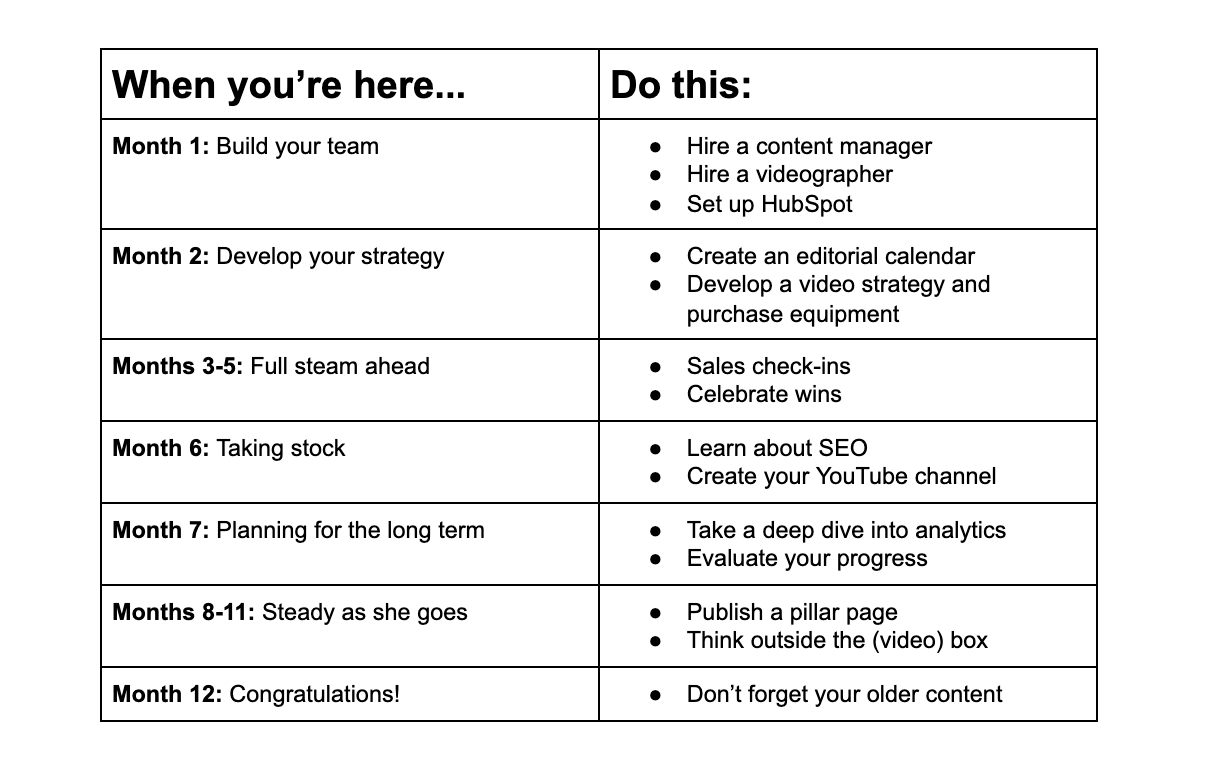
Here’s the full, detailed plan, complete with related resources and other elements to help you along your journey.

Month 1 — Building your team
If you’re ready to commit to They Ask, You Answer mastery, you first need to make sure you have the right people in the right seats. IMPACT recommends having both a content manager and a videographer on staff to handle the increased content production load.
This is a crucial early step. It’s nearly impossible to get started with They Ask, You Answer before you’ve at least got a content manager on your team.
This team not only creates all of your marketing content — such as blog articles, videos, and email campaigns — but they will do it in a way that represents your company’s subject-matter expertise, core values, and voice.
Do this: Hire a content manager and begin thinking about a content strategy
The content manager sits at the center of the entire They Ask, You Answer initiative, so getting this hire right is crucial.
When hiring, don’t fall victim to the false notion that you need to look within your industry. Hiring an outsider can have benefits, as their unique perspective is likely shared by some of your customers. Think about it this way — if they have questions, chances are good that your customers do, too. We recommend people from the journalism field.
When you do bring a content manager on, be careful not to pile too many duties onto this new role. Content management in and of itself is a hefty task. You’re going to want this person to be publishing at least three articles per week. Adding more responsibilities means that some things won’t get done well or won’t get done quickly.
According to Jen Barrell, an IMPACT content marketing trainer, “This content manager role can easily get diluted when other marketing tasks get stacked on top of driving content. Once that happens, it’s a slippery slope toward having your content specialist become a marketing generalist.”
Once your content manager is in place, begin to develop your content strategy. You can start by answering this one question: What questions are your sales reps hearing from buyers?
Your nascent content strategy will be your roadmap — and it can start just that simply: Answer the questions your customers ask. Jen says, “Your content strategy is the glue that will hold all your content — written and video — together.”
You will work to fully define your strategy in month two.
Do this: Hire a videographer
In tandem with your content manager, your videographer will help drive your content strategy forward.
We all know that internet users consume more video content each year, and this is making video production a must-have for all SMBs. Having a videographer in-house will allow you to produce videos more quickly and more cheaply.
But how should you hire for this role? IMPACT Video Trainer Lindsey Schmidt offers this advice:
“When hiring a videographer, you’re really looking for someone who can own all aspects of this role: from fitting in with your culture, having the necessary soft skills, to getting the most out of your team. The person you hire will be the driving force behind your video content initiative.”
Once these two critical team members are in place, you are truly ready to begin your They Ask, You Answer journey.
Your videographer and content manager will soon begin working with your sales team to address the questions they hear most often. They will also work with your subject matter experts (SMEs) to share their insights to drive organic traffic, which we’ll cover in more depth later.
As you begin, remember — company buy-in is essential. As Jen puts it, “Following the principles of They Ask, You Answer is a full company initiative.”
If other stakeholders are not committed to this initiative, you won’t get far.
Do this: Set up HubSpot
HubSpot offers an essential set of tools for any company focusing on content marketing and They Ask, You Answer. It helps you tie any content you produce to a specific amount of revenue. There are free versions for those just starting out, and they go all the way up to enterprise-level versions for huge companies.
HubSpot will help you to evaluate the efficacy of any content you produce, coordinate your marketing efforts, publish content to social media, keep track of your data, and much much more.
Month 1: Related resources
When you and your team are ready to get started, use the resources below to help.
- Building a True Culture of Inbound with They Ask, You Answer
- They Ask, You Answer Fundamentals With Marcus Sheridan
- How To Hire a Content Manager
- Content Manager Job Description for Marketing Teams (All Industries)
- How To Hire an In-House Videographer: Selecting and Interviewing the Best Candidate
- What Is Hubspot and What the Heck Does It Do, Anyway?
- HubSpot Pricing: Your Guide To Everything HubSpot Costs for 2021
- How a Lack of Sales and Leadership Buy-in Is Killing Marketing Morale Worldwide
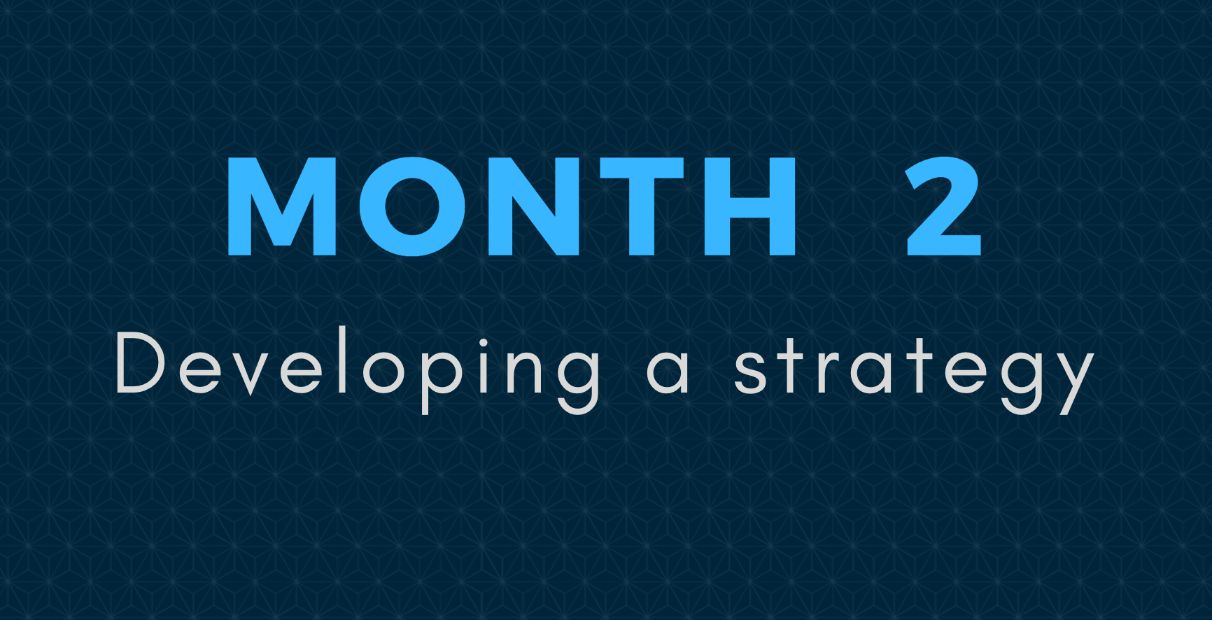
Month 2 — Developing a strategy
Once you have hired a videographer and content manager, you should expect them to start producing content immediately.
Marcus Sheridan advises, “Content managers should start producing written work in the first week. In fact, the best onboarding is interviewing staff and asking them questions about the products and services that you sell.”
The same holds true for videographers. Get them started producing videos as quickly as possible. There is going to be an inevitable learning curve, and the sooner they get started, the better.
But, content production is nothing without a content strategy.
Do this: Create an editorial calendar and start publishing
Your goal with content production should be to publish three articles per week, but you can’t do that until you develop a content calendar and populate it with topics that answer your buyers’ questions.
You should meet with your sales team and brainstorm a list of 15–20 topics your buyers want you to answer. We recommend starting with the articles that drive the most traffic and convert the most leads, such as The Big 5.
The Big 5 are topics that represent the questions buyers obsess about and search in-depth before making big purchase decisions — and when you answer them on your website, they do the heaviest lifting when it comes to attracting prospects and increasing traffic, leads, and sales.
No matter what you’re selling, your buyers want to have answers to the same five questions. Your willingness to address these topics openly on your website is going to build trust. Make sure you are keeping these things in mind when producing content:
- Cost: Buyers want to know how much they can expect to spend, as well as the factors that make that price go up or down. You should address costs openly on your website.
- Reviews: Buyers want to hear from other buyers about their experience with a product or service — and from experts who know their stuff.
- “Best of” lists: Buyers will search for content that allows them to compare several top solutions for their problem as they home in on the one they want.
- Problems: Just like with reviews, buyers want to know about the potential drawbacks of whatever they’re considering so they know they won’t be making a purchase they’ll regret.
- Comparisons: When making a final decision, it’s likely that a buyer will put several similar options side by side to evaluate relative strengths and weaknesses.
You can use this list to help populate your production backlog. Whatever you sell, make sure you’re addressing these core topics so that buyers feel that you understand their hesitations and questions.
Getting started is hard, but you’ll be able to build momentum with each piece you publish. If you don’t know anything about search engine optimization (SEO), now’s the time to learn the basics, but don’t pause publication while you study up.
Jen reminds you: “Don’t sacrifice the good for the perfect. You can always return to a previously published article to fully optimize it at a later date.”
The crucial step in month two is to build the habits that will maintain a consistent publication schedule in the future.
Do this: Develop your video strategy and purchase some equipment
Producing videos internally requires an upfront investment in equipment. This means a camera, microphones, lighting equipment, and more. However, don’t just twiddle your thumbs while you’re waiting for your packages to arrive. There are some videos you can film with just a smartphone.
Beyond equipment, your second month of They Ask, You Answer must focus on identifying your priorities and developing an internal process that keeps video production moving forward.
When meeting with the sales team, work with the content manager to determine which buyer questions would best be answered in video. In many cases, a single topic can yield both a video and an article. As such, it’s important for the videographer and content writer to plan content production together. We recommend starting with The Selling 7, which are videos that drive the most revenue.
They include:
- The 80% video: Take note of the questions your sales team gets asked on 80% of their calls, and answer them in advance. These videos will shorten sales cycles and save your sales team from answering the same, commonly asked questions over and over.
- Bio videos for email signatures: Allow prospects to “meet” and see your sales team or any other customer-facing employees via video before they interact with your business’s employees.
- Product and service fit videos: Weed out your bad-fit leads and strengthen your attractiveness to good-fit leads by establishing yourself as a transparent and trustworthy business.
- Landing page videos: A landing page video serves to eliminate the fear that if someone fills out a form on your site, their personal information will be misused. These increase form submissions by about 80%.
- Cost and pricing videos: These videos give your sales team another powerful tool for explaining your business, and also give your prospects an efficient way to share cost information with key decision-makers.
- Customer journey videos: These are three-stage videos that use the traditional hero’s journey — a storytelling strategy often used in film and literature — to help prospects see themselves in your customers.
- “Claims we make” videos: Sometimes similar to an “about us” video, but when they’re done right, they provide visual proof of why you’re claiming what you are.
It is all too easy for video projects to stall out and form a bottleneck without a clearly defined process. According to Lindsey, “The goal of your videographer should be to be consistently producing two or three videos a week. The secret to being able to do this is to have an airtight process, starting with the approval of an idea and ending with the publication of the video.”
Month 2: Related resources
- How To Write “The Big 5”
- Crafting “Selling 7” Videos That Convert
- How To Do Small Business Video Marketing
- What Your Business Video Strategy Must Include
- Technical SEO Basics for Inbound Marketing
- 7 Video Production Equipment Essentials Your Business Needs
- How To Use Trello for Your Video Marketing Strategy (With Examples)

Months 3-5 — Full steam ahead
With your team built out and your strategy providing you with a roadmap, you should be ready to produce three articles and two videos per week.
You should systematically be working through the questions your sales team hears, making sure to address “The Big 5” and “Selling 7” content areas.
This is where your content team will get really good at creating sales enablement content for your sales team that they can use in their selling process. When this works as it should, your sales team can use the content your marketing team creates to close more deals infinitely faster.
Our clients here at IMPACT that have mastered this selling technique — which we call assignment selling — see an unbelievable ROI as a result.
As your team gets more skilled at creating content, this is the time you can really home in on content your sales team needs to close deals faster.
Do this: Sales check-ins
At IMPACT, our content team meets with our sales team every other week to brainstorm. We call these groups “revenue teams.” Once we make a list of topics and questions, we use an upvoting system to determine priority.
They meet to:
- Develop content your sales team needs to attract qualified buyers.
- Brainstorm which pieces of content your sales team can use in their selling process to close deals faster.
- Understand what content isn’t useful in the sales process so that marketing won’t waste time creating it.
When an article gets published, make sure the sales team knows about it. If it’s not meeting their needs, revise it.
Also, as you begin to build a library of content, keep in mind that you may need to update older articles if certain details change.
Even though some people on the team will be more focused on marketing (e.g., creating content) while others will be working on sales efforts (e.g., closing deals), the team plans and acts as one.
Do this: Celebrate wins
With the right personnel, equipment, and strategy, you should be producing videos at a good clip. However, Lindsey warns that it’s all too common to get stuck. She advises that you should “attack your video production initiative with a ‘ready, fire, aim’ mentality. Don’t get bogged down in the weeds of making your videos perfect.”
Instead, focus on getting your videos out the door.
“If you spend too much time in the approval process, it defeats the purpose of producing and releasing as many videos as you can. If you think a video is 80% of the way there, publish it.”
As you produce and publish videos, make sure to acknowledge people who have been on camera. For many, getting in front of the lens is a scary prospect. You can help build a culture of video by celebrating those who have volunteered (or been volun-told), and further diminish the fear other colleagues might be feeling.
Months 3-5: Related resources
- Assignment Selling: Content Is Your Greatest Sales Tool
- How To Master the Art of Using Content in the Sales Process
- The Revenue Team Approach to Sales Enablement Content
- Fundamentals of ROI Reporting in HubSpot
- Mastering On-Camera Performance
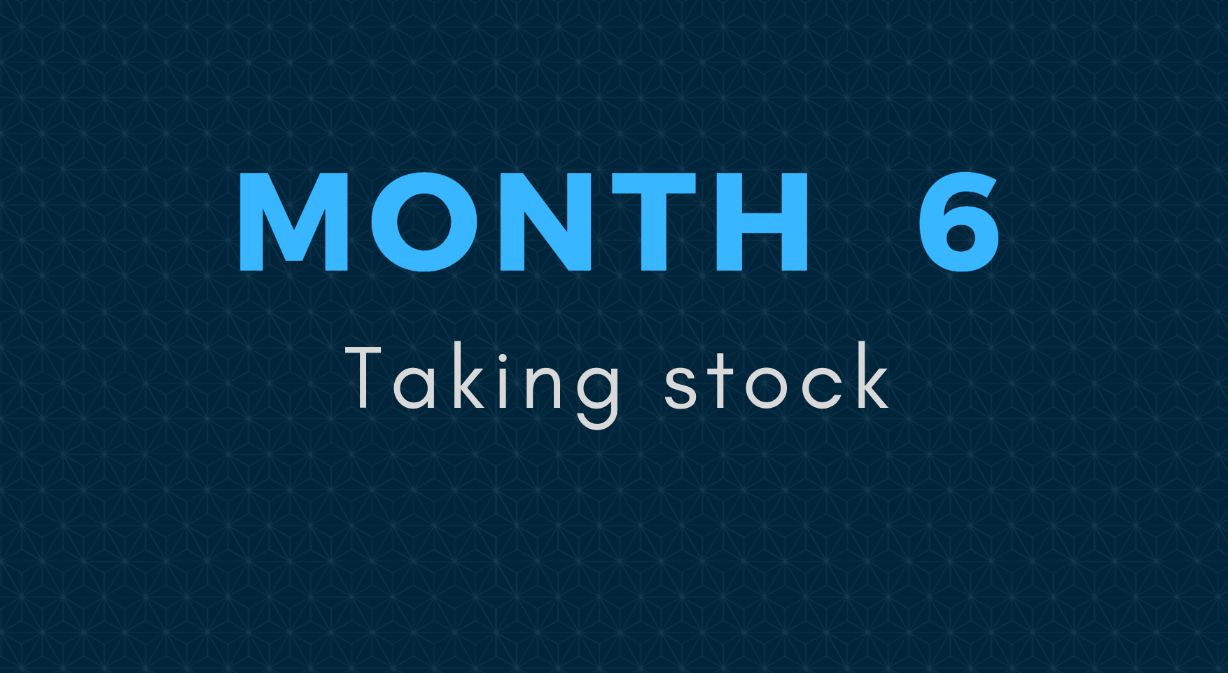
Month 6 — Take stock of your progress; focus more on traffic-driving content
Six months into your They Ask, You Answer initiative, it’s time to take stock. This doesn’t mean ceasing production. It means taking a close look at all processes and strategies to evaluate their efficacy.
Also, your content strategy will begin to focus more on organic search, so it’s critical that you keep up with SEO best practices.
Content that drives traffic
A big part of They Ask, You Answer is writing content that gets found in search results and drives traffic to your site. This means focusing on SEO. There are thousands of articles, videos, and online courses to help you.
Although there is much to learn (and algorithms frequently change), keep this one precept in mind: Write content that is thorough, accurate, and helpful.
If you use this as your core tenet, you’ll be off to a good start.
Do this: Learn as much as you can about SEO
If you’ve been publishing three pieces of content per week for five months, you will have amassed a library of about 60 articles by this point. Chances are, you’ve covered many of the questions the sales team gets asked most often. Now, you should begin focusing on traffic-driving content that will bring organic visitors to your website.
This means becoming an SEO expert.
Remember, “The best written articles will never be found online if they aren’t following SEO best practices,” says Jen. “You need to learn how the robots think to be able to get their attention and get ranked. This includes building a keyword strategy and understanding search intent.”
If you don’t know what people are searching for, start out by doing research.
Use research tools to see what questions people are searching in your industry. Then, see what content exists for each subtopic to determine your strategy.
Use research tools
Your SEO research can get started with extremely simple tools. Before you dive into more complex analytics, start with the basics.
Google is not just a research tool for searchers, but for businesses as well. Start typing keywords related to your business. What questions are coming up?
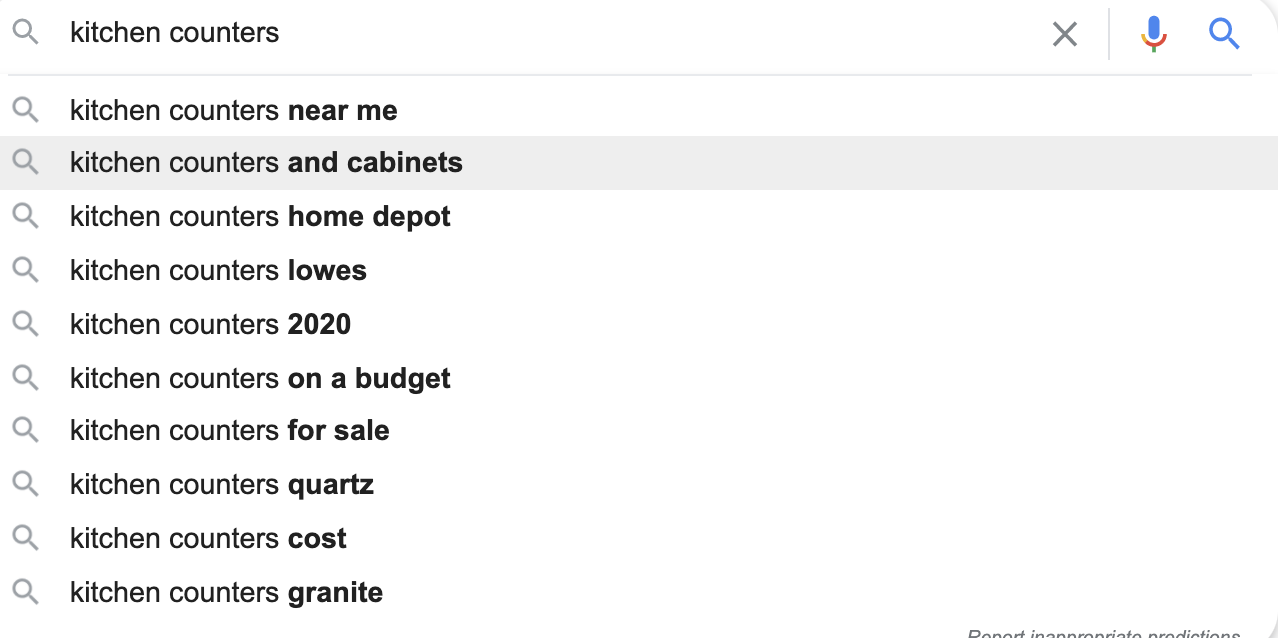
Search for the types of questions you think your customers would ask, and look at the results. You should plan to produce content that is superior to what you see.
Are there questions that are not answered fully? Are there concerns that go unaddressed? Use data and insight to plan a path forward.
Tools like Answer The Public can also help you learn more about what searches are happening now.

Then, to develop your keyword strategy, use more advanced tools like Semrush, BuzzSumo, Google Analytics, and others to plan.
As you begin to produce content that drives organic traffic, don’t cease answering the questions your current customers and prospects are asking. A good content strategy does both.
Do this: Create your YouTube channel
Now that you’ve built up a library of video content, start thinking about other ways that content can reach your audience. YouTube is the next logical step, advises Lindsey. “Remember, this is where you separate yourselves from the rest of your industry by positioning your company as thought leaders for education in your industry.”
YouTube is increasingly seen as an educational platform. If your videos are useful to an audience, you will see traffic pick up. Regular content publication can lead to viewers, subscribers, and other fans who could easily become leads.
Additionally, after you pass the monetization threshold, you can begin making money from ads placed in your videos.
Month 6: Related resources
- Technical SEO Basics for Inbound Marketing
- On-Page SEO and User Experience
- How To Optimize a Blog Post for SEO
- How Long-Tail Keyword Research Can Drive Business
- How To Enable Your YouTube Channel for Monetization
- How To Create a YouTube Channel for Business (+ Examples)
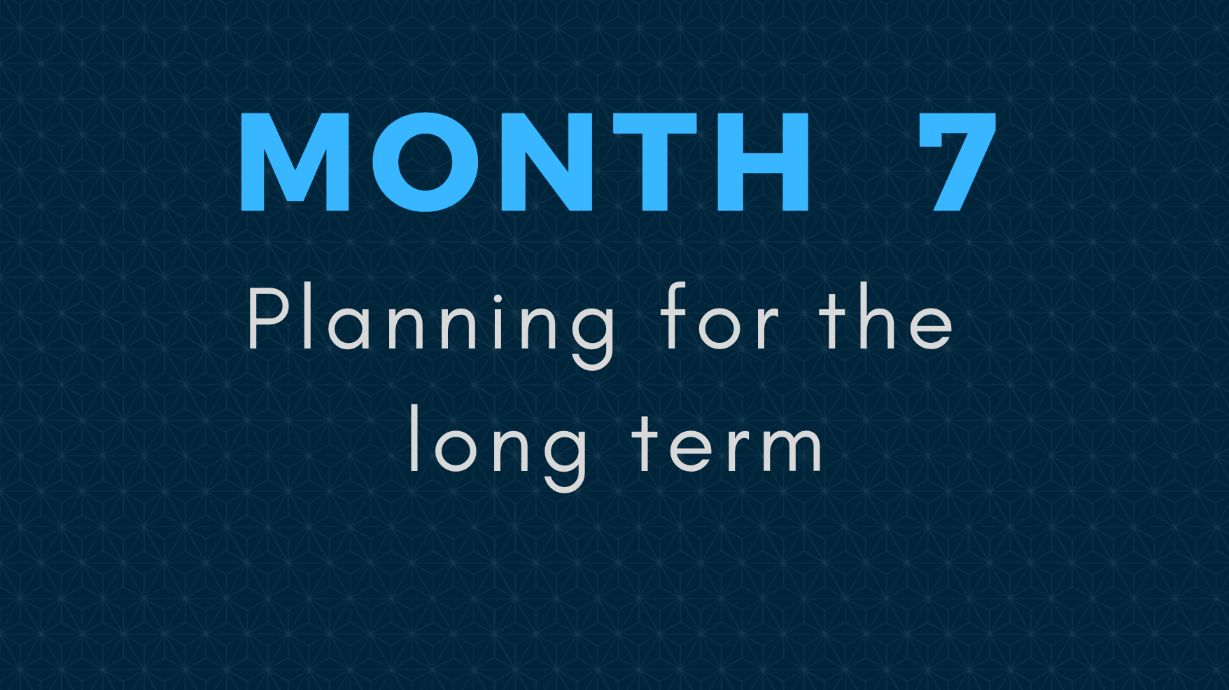
Month 7 — Planning for the long term
Your six-month evaluation and course correction should have you poised to keep building on earlier successes as you head into the second half of the year. Keep doing the same things — just begin doing them better.
Do this: Take a deep dive into analytics
You have likely written dozens of articles by this point. How have they performed? Use the tools at your disposal to track their traffic, their position in search, their connection to closed deals, and more.
“With more than six months under your belt, you’ve now built a solid foundation of data to look at. Rely on Google Analytics, Google Search Console, keyword growth tools like Semrush or Ahrefs, and CMS tools like HubSpot to monitor the vibrancy of your content so far.” — Jen Barrell
Then, decide how you’ll use that data to tweak underperforming content and celebrate the content wins you have.
At the same time, you should refine your tech stack. Are certain tools more useful than others? If so, trim your expenses by ditching analytics tools that are cumbersome, redundant, or too pricey.
Do this: Evaluate your video progress
Similarly, this is a time to check in on what you’ve done so far so you can best chart your course forward.
Check the metrics on your website videos and analyze what videos are working best with your sales team. Evaluate your process and note how much time each step takes. Refine based on your findings.
Lindsey suggests you look beyond the surface numbers of your data: “Make sure you’re considering viewer retention. Are people sticking around for the majority of your videos? If you’re seeing a significant drop off early on, it’s time to refine that content.”
Determine what’s making your top-performing videos so popular. What’s holding your under-performers back? Use the data you have to make smart decisions about your content.
Month 7: Related resources
- HubSpot Campaigns and Campaign Analytics
- How To Track Digital Sales and Marketing Mastery Metrics With a HubSpot Dashboard
- Case Study: Are You Confident in the Data Behind Your Content Marketing Strategy?
- Google Analytics Checklist: Is Your Website Reporting Data ‘Clean’ and Accurate?
Months 8-11 — Steady as she goes (and keep dreaming big)
By now, things should be humming along. You should be producing content for the sales team and for traffic purposes, and using analytics to refine your strategy.
Do this: Publish a pillar page
Chances are, your written content strategy has led you to cover some topics in depth. You may have written six or seven articles about a single service, product line, or software. You can bundle that content together into a pillar page — an in-depth guide to that particular thing.
Your pillar page could be the definitive guide to metal roofs, home office furniture, or restaurant software. Whatever your subject, pillar pages are hugely valuable to customers, and very beneficial for your website, as well.
Study how to create a pillar strategy and develop the outline for your first pillar. You’ll find that you’ve already done most of the work by writing the articles in the first place.
Jen says, “A pillar strategy will super-charge your SEO efforts, and, once you get the hang of it, will become a mainstay in your overall approach.”
Don’t just use your great content once. A pillar strategy lets you get more bang for your buck.
Do this: Think outside the video box
Now that you’ve been doing this for some time, what’s next? Are there other video-related goals your organization has? You might start a podcast, work on employee bio videos, create a learning center on your website, or look at social media-purposed videos.
Think creatively about how you can reach your customer.
Months 8-11: Related resources
- Creating Pillar Content Your Buyers and Search Engines Will Love
- How To Write A Pillar Page
- How To Connect Your Blog Strategy to Your Pillar Strategy
- Fundamentals of Creating Sales and Marketing Videos
- Fundamentals of Virtual Selling
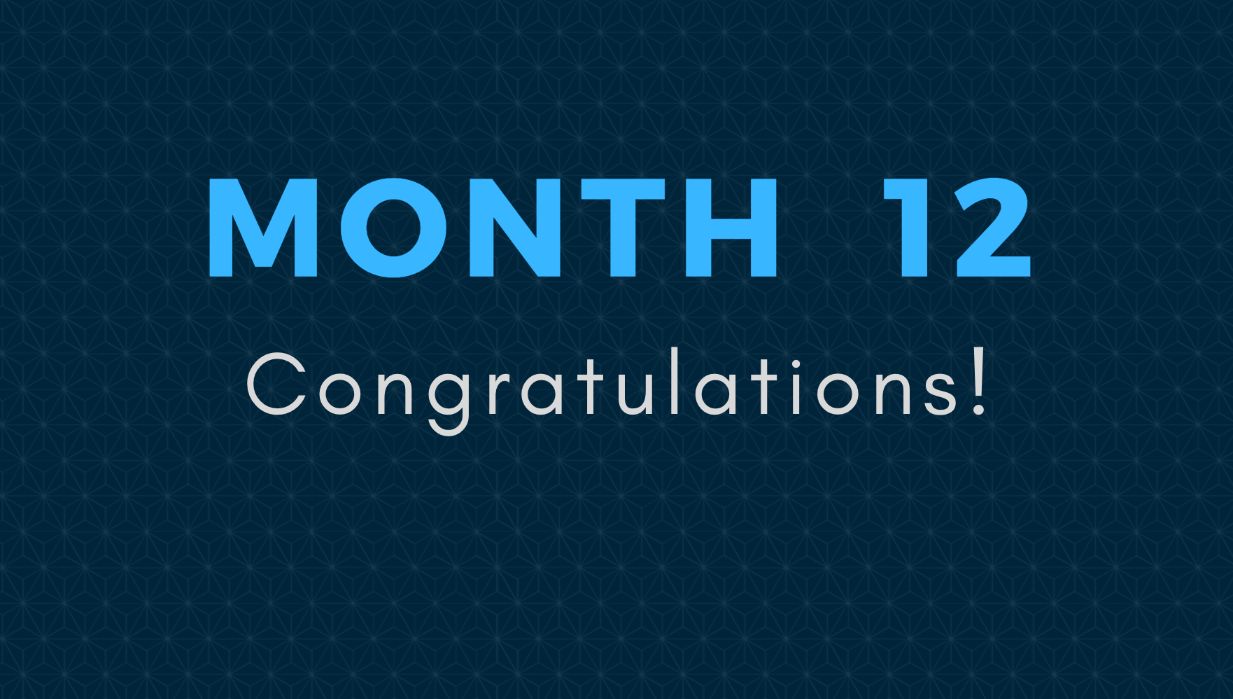
Month 12: Congratulations! You’ve spent a year teaching and helping your customers
Congratulations! You have made it to the end of your first year of They Ask, You Answer! Take stock of the tremendous work that you and your teammates put in to make this initiative come to life. If you’ve been following the publication guidelines stated above, you’ve published over a hundred articles — and nearly as many videos.
This content should be helping your sales team close deals faster and help your website attract organic traffic through search engines. Maybe your content has gained traction on social media as well.
Hurrah! You deserve a pat on the back and a round of applause!
Do this: Don’t forget your old written content
Create a plan to evaluate and optimize your older content. If one piece is driving a lot of traffic, make sure it stays up to date. If others are underperforming, see if you can figure out why.
Create a backlog of articles to optimize and update.
Remember, don’t change the URL when you update an older article. That URL has already established authority with the search engines. A new URL would force you to start from scratch.
Do this: Don’t forget your old video content
Look at your top-performing and lowest-performing videos. What are the differentiating factors? What do you need to revise about the lowest performers to make them high performers?
Living They Ask, You Answer long term
Keep in mind that your worst piece of content could be a customer’s first introduction to your brand. Make sure your weakest links are either taken down or improved to meet your standards.
That’s how you move forward into your second year of They Ask, You Answer.
Lindsey offers the following year-end advice: “Now that you’ve been doing this for a year, you likely have an understanding of what does and doesn’t work for your customers. Use that knowledge to plan for the future.”
There is still work to be done, she says. “Keep creating content that is informative, exciting, and most of all, helpful to your customers.”
Use the culture of content creation you’ve built to charge into the new year. Keep trying for those high-ranking articles. Keep optimizing your top-performing content.
They Ask, You Answer requires you to obsess over your customers’ needs and questions. Such work is never finished, but you should be proud of how much you’ve already achieved.
Build a fool-proof They Ask, You Answer marketing strategy for your business
The information and examples we share with you here come from the award-winning inbound marketing framework we teach our clients called They Ask, You Answer. Here at IMPACT, we strive to help businesses like yours build the best inbound marketing strategies on the planet, and a large portion of our client’s success comes from the They Ask, You Answer approach to marketing.
This method has worked for thousands of companies, small and large, B2B and B2C, across a wide range of industries. Hundreds of our IMPACT clients have used these steps to help their sales teams realize incredible results.
To implement They Ask, You Answer in your business, here are a few helpful resources:
Our strategic coaching and hands-on training for your marketing and sales teams will help you improve your inbound marketing strategy and scale your business. Set up a time to talk to one of our advisors, and we’ll show you how to alleviate your inbound marketing challenges so you can finally do what you set out to: help your business grow.


Order Your Copy of Marcus Sheridan's New Book — Endless Customers!


